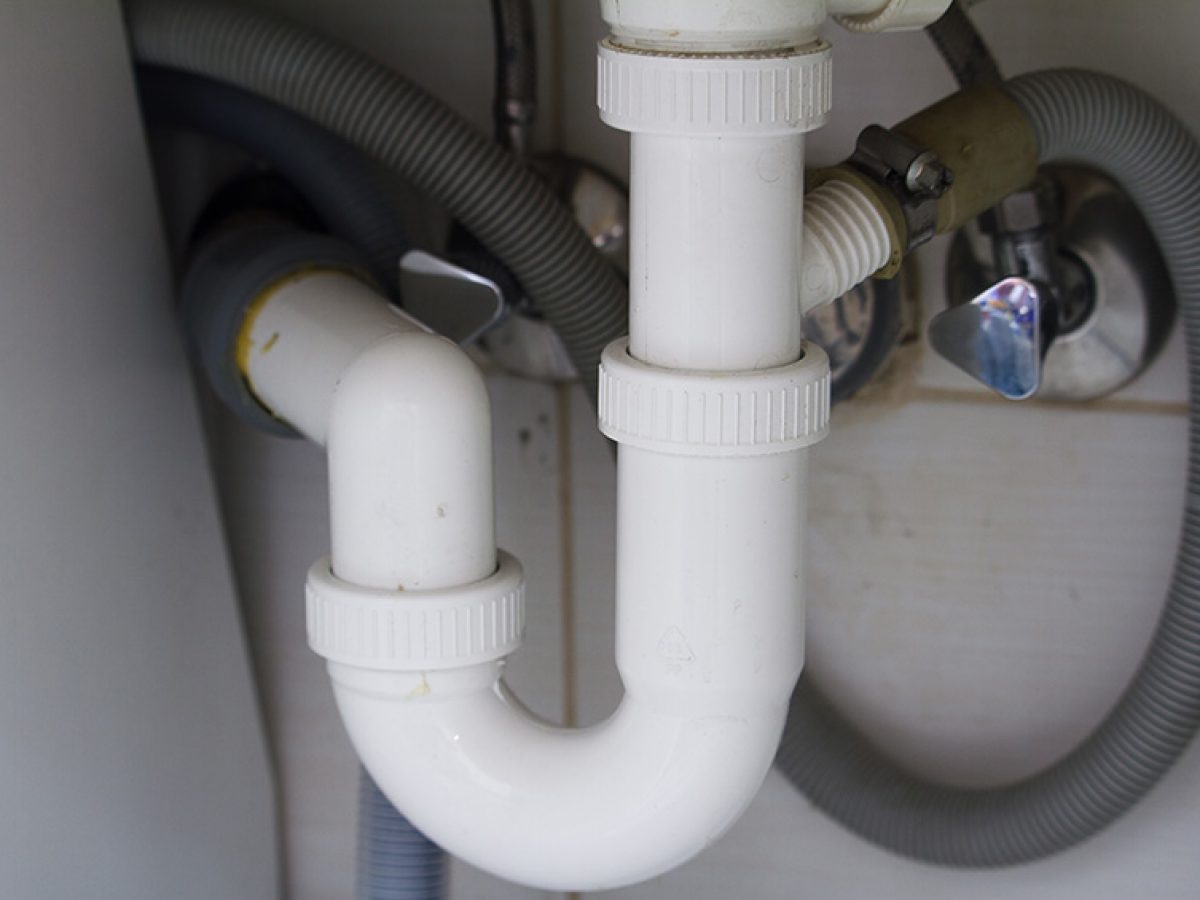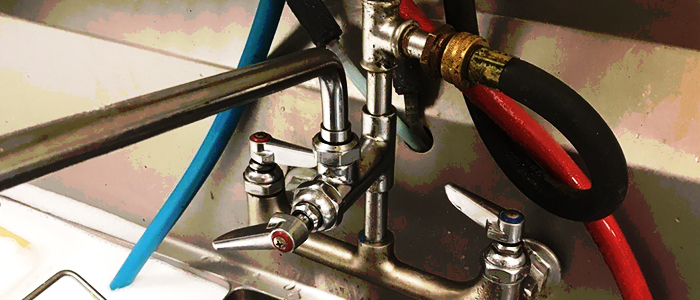The Main Elements of Your House's Plumbing System
The Main Elements of Your House's Plumbing System
Blog Article
Everybody seems to have their own unique piece of advice with regards to Exploring Your Homes Plumbing Anatomy.

Recognizing how your home's pipes system functions is important for every single homeowner. From providing tidy water for drinking, food preparation, and bathing to securely getting rid of wastewater, a well-maintained plumbing system is important for your family members's health and convenience. In this extensive guide, we'll check out the detailed network that makes up your home's plumbing and deal pointers on maintenance, upgrades, and dealing with typical concerns.
Introduction
Your home's plumbing system is more than simply a network of pipelines; it's a complicated system that guarantees you have accessibility to clean water and efficient wastewater removal. Understanding its parts and just how they work together can aid you prevent expensive repair services and make sure every little thing runs efficiently.
Basic Components of a Plumbing System
Pipes and Tubes
At the heart of your pipes system are the pipelines and tubes that bring water throughout your home. These can be made of different materials such as copper, PVC, or PEX, each with its advantages in regards to resilience and cost-effectiveness.
Fixtures: Sinks, Toilets, Showers, etc.
Fixtures like sinks, bathrooms, showers, and tubs are where water is utilized in your house. Recognizing just how these components attach to the pipes system aids in detecting troubles and intending upgrades.
Shutoffs and Shut-off Points
Shutoffs control the circulation of water in your plumbing system. Shut-off shutoffs are vital during emergency situations or when you need to make fixings, enabling you to separate parts of the system without interrupting water circulation to the entire residence.
Water System System
Main Water Line
The main water line connects your home to the municipal water or an exclusive well. It's where water enters your home and is dispersed to numerous components.
Water Meter and Pressure Regulator
The water meter measures your water usage, while a stress regulatory authority makes sure that water streams at a safe pressure throughout your home's pipes system, protecting against damages to pipes and fixtures.
Cold Water vs. Hot Water Lines
Recognizing the difference between cold water lines, which supply water straight from the major, and hot water lines, which carry warmed water from the hot water heater, assists in troubleshooting and planning for upgrades.
Water drainage System
Drain Pipes Pipeline and Traps
Drain pipes lug wastewater far from sinks, showers, and toilets to the sewer or septic system. Traps protect against sewage system gases from entering your home and likewise trap particles that might cause obstructions.
Air flow Pipes
Ventilation pipelines enable air right into the drainage system, avoiding suction that can reduce drainage and trigger catches to vacant. Proper ventilation is vital for keeping the integrity of your plumbing system.
Significance of Correct Water Drainage
Ensuring proper drain protects against back-ups and water damage. Routinely cleaning drains pipes and maintaining traps can protect against costly repair services and expand the life of your plumbing system.
Water Heater
Kinds Of Hot Water Heater
Water heaters can be tankless or conventional tank-style. Tankless heating systems heat water on demand, while containers store heated water for instant usage.
How Water Heaters Link to the Pipes System
Recognizing how water heaters link to both the cold water supply and warm water circulation lines helps in identifying problems like not enough warm water or leaks.
Maintenance Tips for Water Heaters
Frequently purging your hot water heater to remove sediment, inspecting the temperature level setups, and inspecting for leaks can prolong its life expectancy and boost power efficiency.
Common Plumbing Problems
Leaks and Their Reasons
Leakages can take place as a result of maturing pipelines, loose fittings, or high water pressure. Dealing with leaks quickly avoids water damage and mold growth.
Blockages and Obstructions
Blockages in drains pipes and commodes are usually brought on by purging non-flushable things or a build-up of oil and hair. Making use of drainpipe displays and bearing in mind what decreases your drains can prevent clogs.
Indicators of Pipes Problems to Watch For
Low tide stress, slow-moving drains pipes, foul odors, or uncommonly high water expenses are indications of prospective plumbing problems that should be addressed quickly.
Plumbing Upkeep Tips
Normal Examinations and Checks
Set up annual plumbing inspections to capture concerns early. Try to find signs of leaks, deterioration, or mineral build-up in faucets and showerheads.
DIY Maintenance Tasks
Straightforward jobs like cleansing faucet aerators, checking for toilet leakages utilizing dye tablets, or shielding revealed pipelines in cold climates can protect against significant plumbing issues.
When to Call a Specialist Plumbing
Know when a pipes problem requires professional experience. Attempting complex fixings without proper expertise can cause even more damage and higher fixing expenses.
Upgrading Your Pipes System
Reasons for Upgrading
Updating to water-efficient fixtures or changing old pipelines can improve water top quality, decrease water bills, and raise the value of your home.
Modern Plumbing Technologies and Their Advantages
Discover innovations like clever leak detectors, water-saving bathrooms, and energy-efficient water heaters that can save money and lower ecological impact.
Price Considerations and ROI
Compute the in advance prices versus long-lasting savings when thinking about plumbing upgrades. Many upgrades spend for themselves through minimized utility expenses and less repairs.
Ecological Impact and Preservation
Water-Saving Fixtures and Home Appliances
Installing low-flow taps, showerheads, and commodes can significantly minimize water usage without compromising efficiency.
Tips for Decreasing Water Use
Simple routines like dealing with leakages quickly, taking much shorter showers, and running full tons of washing and dishes can save water and reduced your utility expenses.
Eco-Friendly Pipes Options
Think about lasting plumbing materials like bamboo for floor covering, which is durable and eco-friendly, or recycled glass for counter tops.
Emergency situation Preparedness
Steps to Take Throughout a Plumbing Emergency
Know where your shut-off shutoffs lie and how to shut off the water in case of a ruptured pipeline or major leak.
Importance of Having Emergency Get In Touches With Useful
Keep get in touch with info for local plumbing technicians or emergency solutions conveniently available for quick reaction throughout a pipes crisis.
DIY Emergency Fixes (When Suitable).
Short-lived solutions like making use of duct tape to patch a leaking pipe or putting a container under a trickling tap can minimize damage until an expert plumbing shows up.
Final thought.
Recognizing the makeup of your home's pipes system encourages you to maintain it effectively, saving time and money on repair work. By following regular maintenance routines and staying informed about modern pipes innovations, you can guarantee your pipes system runs effectively for many years to find.
Understanding Your Home Plumbing System: A Comprehensive Guide
Plumbing System: The Lifeline of Your Home
At its core, the plumbing system is designed to perform two primary functions: bring fresh water into your home and remove wastewater. The system is a network of pipes, fixtures, and other components that transport water and sewage. Residential plumbing systems include potable water supply lines, drain-waste-vent (DWV) systems, and various plumbing fixtures that make water use in daily tasks possible.
Key Components:
Water Supply: This part of your plumbing system brings municipal water into your home, passing through the main water supply line. It s responsible for supplying all water needs, from drinking to bathing.
Drainage System: It carries waste and water away from your home to the sewer or septic system. This system includes all the piping within your home that leads to external sewage or septic systems.
Vent System: An essential yet often overlooked component, the vent system allows sewer gases to escape and lets air into the drainpipes, ensuring water and waste move correctly through the system.
Fixture: More Than Just Taps and Toilets
Plumbing fixtures are the most interactive parts of the plumbing system, including faucets, showers, toilets, and sinks. Each fixture is connected to the plumbing system and plays a role in either the delivery of freshwater or the disposal of waste and wastewater.
Types of Fixtures:
Faucets and Sinks: Used for washing hands, dishes, and other daily water needs.
Toilets: Dispose of human waste through the sewage system.
Bathtubs and Showers: Provide bathing facilities, requiring both hot and cold water supply.
Water Supply: The Source of Life
The water supply system is a critical component, ensuring that potable water is available throughout your home for various uses, including drinking, cooking, and cleaning. This system consists of pipes that distribute water to different parts of the house, controlled by valves to regulate the water flow.
Types of Plumbing: Materials and Methods
Various types of plumbing systems and materials are used in residential settings, each with its advantages and applications. From copper and PVC pipes for water supply to cast iron and ABS for drainage, the choice of materials can impact the longevity and efficiency of your plumbing system.
https://intownplumbingtx.com/articles/home-plumbing-system-guide/

Understanding Your Home Plumbing System: A Comprehensive Guide
Plumbing System: The Lifeline of Your Home
At its core, the plumbing system is designed to perform two primary functions: bring fresh water into your home and remove wastewater. The system is a network of pipes, fixtures, and other components that transport water and sewage. Residential plumbing systems include potable water supply lines, drain-waste-vent (DWV) systems, and various plumbing fixtures that make water use in daily tasks possible.
Key Components:
Water Supply: This part of your plumbing system brings municipal water into your home, passing through the main water supply line. It s responsible for supplying all water needs, from drinking to bathing.
Drainage System: It carries waste and water away from your home to the sewer or septic system. This system includes all the piping within your home that leads to external sewage or septic systems.
Vent System: An essential yet often overlooked component, the vent system allows sewer gases to escape and lets air into the drainpipes, ensuring water and waste move correctly through the system.
Fixture: More Than Just Taps and Toilets
Plumbing fixtures are the most interactive parts of the plumbing system, including faucets, showers, toilets, and sinks. Each fixture is connected to the plumbing system and plays a role in either the delivery of freshwater or the disposal of waste and wastewater.
Types of Fixtures:
Water Supply: The Source of Life
The water supply system is a critical component, ensuring that potable water is available throughout your home for various uses, including drinking, cooking, and cleaning. This system consists of pipes that distribute water to different parts of the house, controlled by valves to regulate the water flow.
Types of Plumbing: Materials and Methods
Various types of plumbing systems and materials are used in residential settings, each with its advantages and applications. From copper and PVC pipes for water supply to cast iron and ABS for drainage, the choice of materials can impact the longevity and efficiency of your plumbing system.
https://intownplumbingtx.com/articles/home-plumbing-system-guide/
Do you really like reading about ? Try to leave a remark below. We will be happy to find out your suggestions about this blog post. We are looking forward that you visit us again later on. Sharing is nice. Helping people is fun. Thanks for going through it.
Book An Appointment Report this page